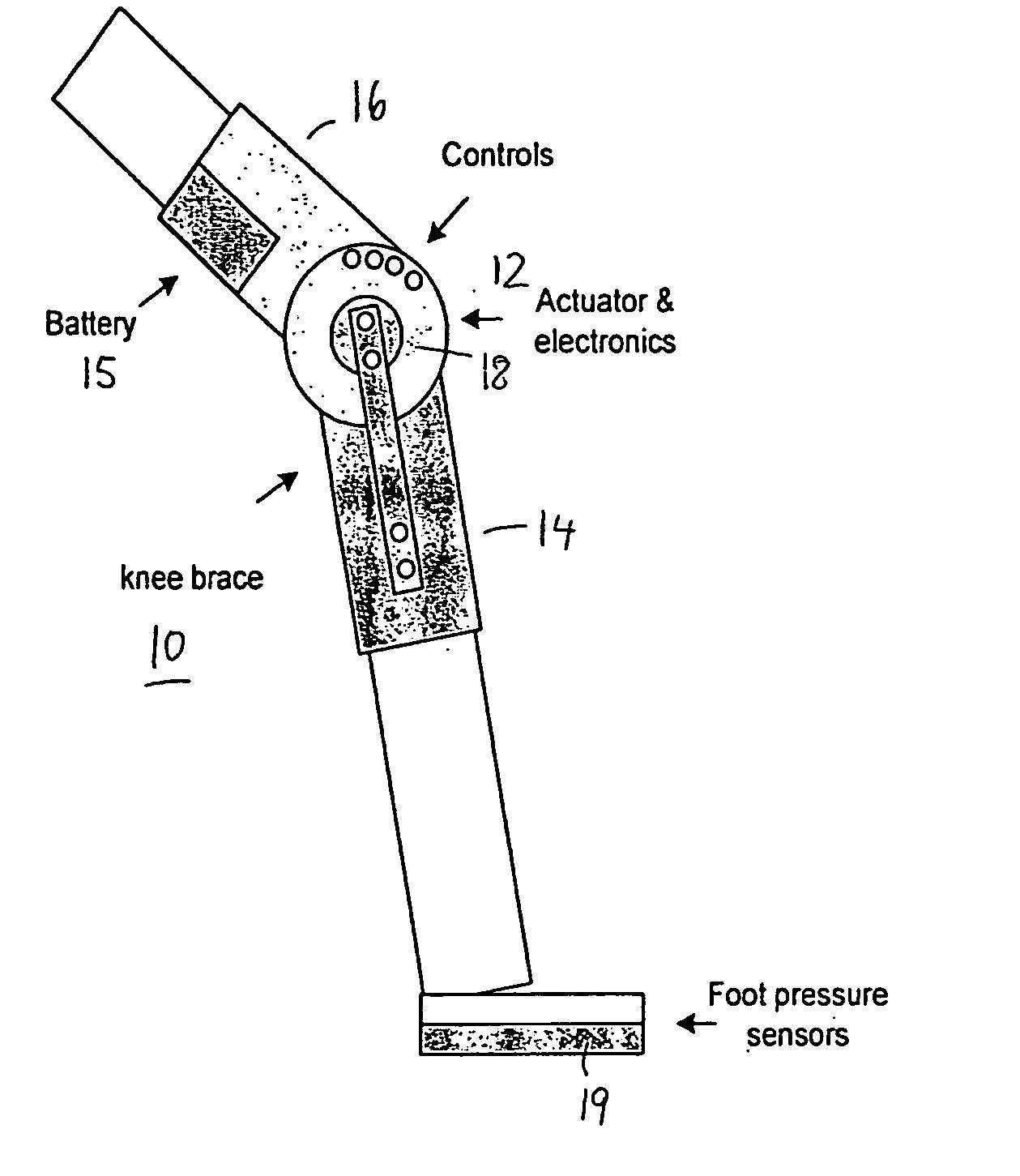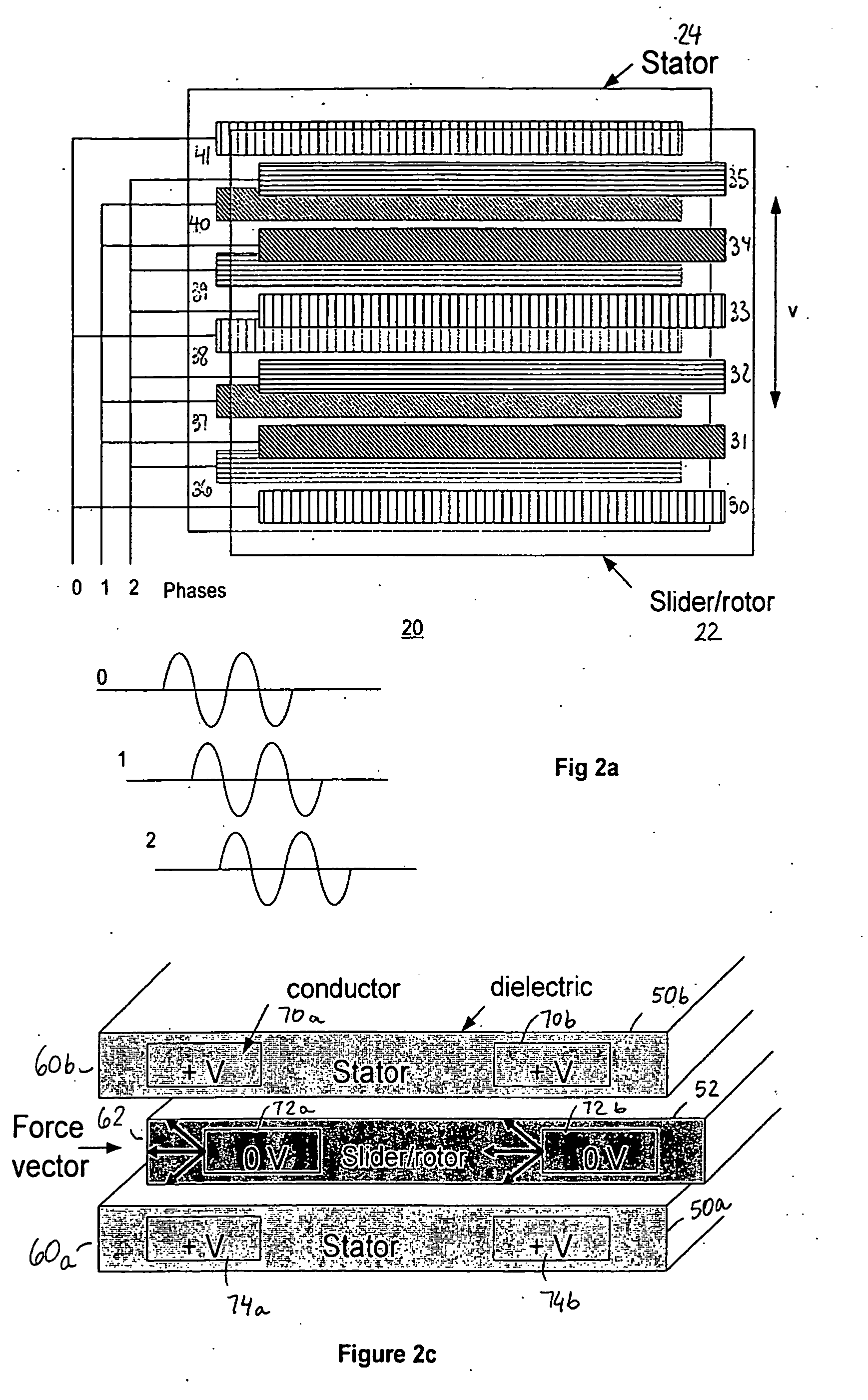Active muscle assistance device and method
a technology of active muscle and assistance device, which is applied in the direction of gymnastic exercise, application, person identification, etc., can solve the problems of no assistance in mobility, no joint support or muscle support or augmentation, and passive assistance device providing limited mobility, so as to avoid adding extra strain to other muscle groups, easy to maneuver, and enhance mobility
- Summary
- Abstract
- Description
- Claims
- Application Information
AI Technical Summary
Benefits of technology
Problems solved by technology
Method used
Image
Examples
Embodiment Construction
[0025] General Overview of A Knee Brace
[0026]FIG. 1 shows an active muscle support brace according to one embodiment of the invention. The device is an active knee brace used to offload some of the stress from the quadriceps when extending the leg. For different parts of the body, other devices are constructed with a suitable shape, but the principles presented here apply by analogy to such devices. The device is particularly useful in helping someone with muscle weakness in the every day tasks of standing, sitting, walking, climbing stairs and descending stairs. The device can also be used in other modes to help build muscle strength and to monitor movements for later analysis. The support to the muscle is defined by the position of the actuator 12 applying force to the moving parts of the brace. Namely, as the actuator 12 rotates, and with it the moving (rigid) parts of the brace, the position of the actuator 12 defines the relative position of the joint and thereby supporting th...
PUM
 Login to View More
Login to View More Abstract
Description
Claims
Application Information
 Login to View More
Login to View More - R&D
- Intellectual Property
- Life Sciences
- Materials
- Tech Scout
- Unparalleled Data Quality
- Higher Quality Content
- 60% Fewer Hallucinations
Browse by: Latest US Patents, China's latest patents, Technical Efficacy Thesaurus, Application Domain, Technology Topic, Popular Technical Reports.
© 2025 PatSnap. All rights reserved.Legal|Privacy policy|Modern Slavery Act Transparency Statement|Sitemap|About US| Contact US: help@patsnap.com



